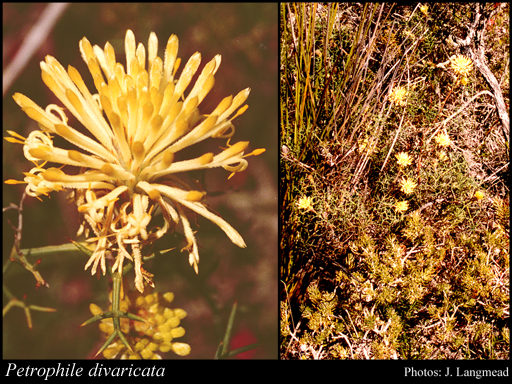- Reference
- Prodr. Suppl. 7 (1830)
- Conservation Code
- Not threatened
- Naturalised Status
- Native to Western Australia
- Name Status
- Current
Non-lignotuberous shrub, 0.5-2 m high. Fl. yellow/yellow-cream, Aug to Dec. Gravelly and/or sandy soils. Granite outcrops, lateritic ridges, sandplains.

Scientific Description
Shrubs, 1-2 m high; branchlets glabrous. Leaves alternate, 50-100 mm long, glabrous; lamina terete, twice or more divided, pinnately divided, divided to the midrib, with (24-)45-71(-75) points or lobes; distance from base of leaf to lowest lobe 10-40 mm. Inflorescences not viscid, cream or yellow. Perianth 20-25 mm long, hairy, the limb apex hairy all over; pistil 20-28 mm long; pollen presenter fusiform, hairy, 2-2.5 mm long. Cone with persistent scales, 26-28 mm long. Flowers in August, September, October, November or December. Occurs in the South-west (SW) Botanical Province(s), in the Swan Coastal Plain (SWA), Avon Wheatbelt (AW), Jarrah Forest (JF), Mallee (MAL) or Esperance Plains (ESP) IBRA subregion(s).
Distribution
- IBRA Regions
- Avon Wheatbelt, Esperance Plains, Jarrah Forest, Mallee, Swan Coastal Plain.
- IBRA Subregions
- Fitzgerald, Katanning, Merredin, Northern Jarrah Forest, Perth, Recherche, Southern Jarrah Forest, Western Mallee.
- Local Government Areas (LGAs)
- Albany, Brookton, Chittering, Corrigin, Cranbrook, Cuballing, Dumbleyung, Gingin, Gnowangerup, Merredin, Moora, Murray, Narrogin, Pingelly, Plantagenet, Ravensthorpe, Wagin, Wandering, West Arthur, Woodanilling, York.